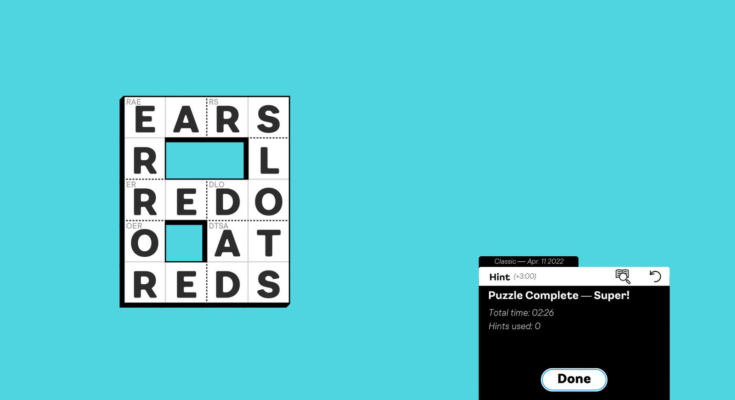Puzzles in Knotwords look a lot like crosswords, but gone is the list of clues. Instead, the board is split into segments and you are told precisely which letters must fit within each region. Your objective is to fit all the letters in as required, while still correctly spelling out words both down and across.
At its most basic, a board will give you two adjacent two letter segments. One needs to contain the letters A and E, and the other needs to contain the letters S and R. Since these two segments form a line across, together they need to form a word. So, in this case, you know that the letters go in the order E-A-R-S and not, say, A-E-S-R. Because that second one isn’t a word, I checked.
The puzzles obviously gets more complicated once the segments aren’t just two letters, but three, four or five, and in crossword-like shapes that mean those letters spread across two or more words. There are lots of nice bits of UI design that help keep it manageable as puzzles grow larger, like the onscreen keyboard that highlights the only letters required in the selected segment.
Knotwords is the work of Zach Gage and Jack Schlesinger. Gage is a regular maker of interesting puzzle games, including twists on standards like chess and sudoku, several of which he’s created with Schlesinger. Gage was also a designer on spaceship-in-crisis sim Tharsis.
Could I cheekily stretch and say that Knotwords is a Wordle-like, and lines up with my obsession with everything inspired by the browser word game? It does have new daily puzzles, but otherwise I think Knotwords has little in common with Wordle-likes as a format beyond the superficial similarity of using words.
You can pick Knotwords up now from Steam, where it costs £8.36/€9/$9 with its 10% launch discount.



